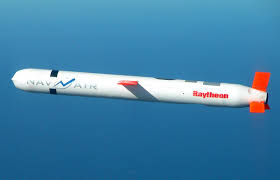The Tomahawk Missile: A Vital Component of Modern Military Strategy

Introduction
The Tomahawk missile has become a pivotal element in the arsenal of modern military forces around the world. First deployed by the United States in the 1990s, these long-range, all-weather, subsonic cruise missiles are designed to strike both land and sea targets with incredible precision. As nations face evolving threats and the complexities of modern warfare, understanding the capabilities and strategic implications of Tomahawk missiles is more important than ever.
Current Developments
Recently, the role of the Tomahawk missile has been underscored by its extensive use in various military operations. Notably, during the ongoing tensions in the Middle East, U.S. forces have launched Tomahawk missiles to target enemy positions safely and effectively from naval vessels. The flexibility of deploying these missiles from submarines and surface ships greatly enhances the operational reach of military forces, allowing for rapid response without putting personnel in immediate danger.
Technological Advancements
The Tomahawk missile has undergone numerous upgrades since its inception. The latest versions feature improved guidance systems that incorporate GPS technology and advanced sensors, making them even more accurate. These enhancements allow the missiles to navigate complex terrains and evade enemy defenses, showcasing the missile’s utility in modern combat scenarios. Moreover, recent reports indicate that the U.S. Navy is developing a maritime variant of the Tomahawk, aimed at expanding its operational capabilities against emerging threats.
Global Implications
The proliferation of Tomahawk missiles is not limited to the United States; countries such as the United Kingdom and India have also integrated them into their military strategies. This widespread adoption raises questions about global military balance and the potential for an arms race, as nations continue to seek advanced technology to secure their national interests. The strategic importance of Tomahawk missiles cannot be overstated, as they serve not only as deterrents but also as tools for rapid, strategic decision-making in conflict scenarios.
Conclusion
In conclusion, the Tomahawk missile remains a vital component of contemporary military strategy, with its precision, versatility, and ongoing advancements highlighting its significance in warfare. As geopolitical tensions continue to evolve, the role of such advanced weaponry will likely expand, leading to new challenges and considerations for military planners and policymakers. The future of conflict may increasingly hinge on the capabilities of systems like the Tomahawk, making it crucial for leaders to understand their strategic implications and potential consequences.








